We used the rented car for one more day and that was to go to the west and to the city of Pafos. Our first destination was the archaeological site of Kourion which is situated a little less than 20 km west of Limassol. Kourion is said to be the site with the finest view in Cyprus, which it probably is, and this effect of its good position was additionally augmented by a bright, sunny day.
Although the first settlements in this area originate from the 6th and the 5th millennia BC, the city of Kourion saw its peak during the Roman times and later in the early Christian period. The site extends along an elevation stretching above the Mediterranean Sea. We started with our sightseeing from the House of Eustolius. Originally this was a private villa which was later turned into ancient baths. Today, it is covered by a roof construction protecting not only the remains of the building, but also some beautiful mosaics that may be seen there.
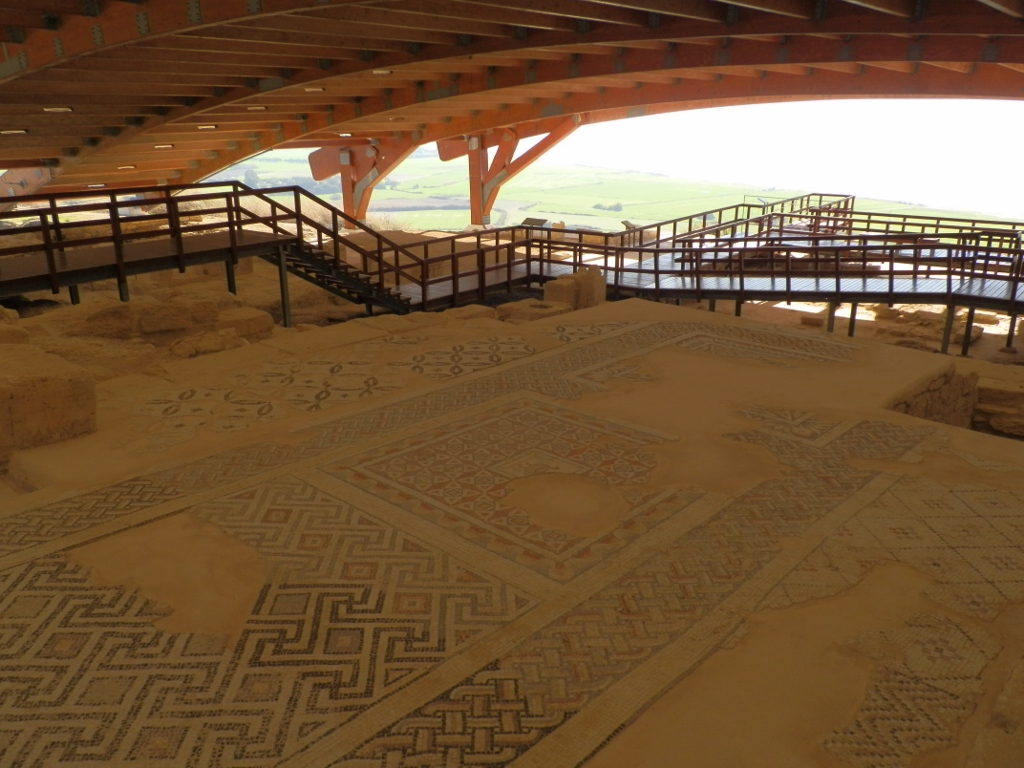 Kourion, the House of Eustolius
Kourion, the House of Eustolius
Still, probably the most impressive structure, which is almost a symbol of Kourion, is its theatre. It was built in the 2nd century BC and extended in the 2nd century AD. A couple of millennia later, the theatre has been restored and nowadays it is often used for concerts and theatre performances. The background of the stage are the nearby green fields and the immense Mediterranean sea.
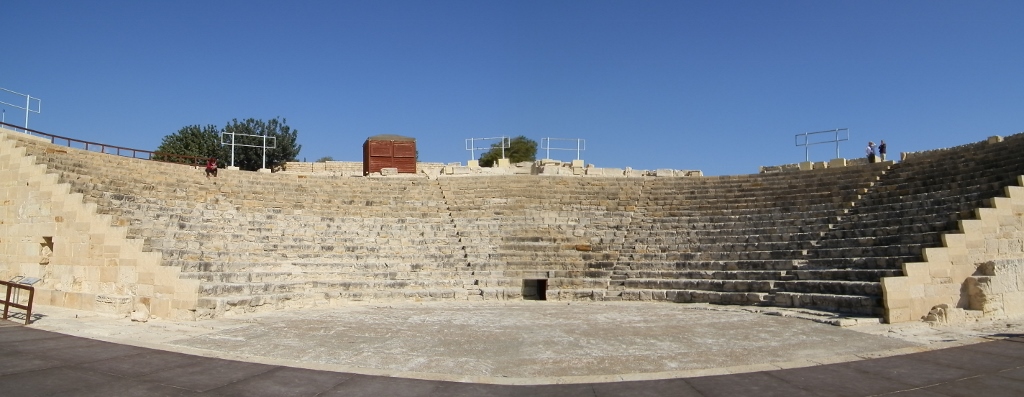 Kourion, the antique theatre
Kourion, the antique theatre
 Kourion, the antique theatre with the Mediterranean sea in the background
Kourion, the antique theatre with the Mediterranean sea in the background
A little farther, there is the Earthquake House. It is a Roman house from the end of the 1st century and the beginning of the 2nd century AD. Its name comes from the fact that this areas was struck by a catastrophic earthquake in 365 AD, when this house was also destroyed, and during its excavation and study, some human remains and objects were found that clearly depict how people used to live here.
Very close to this house there is a stunning viewpoint with a bench to sit on and so we made a short break in order to enjoy the natural beauties.
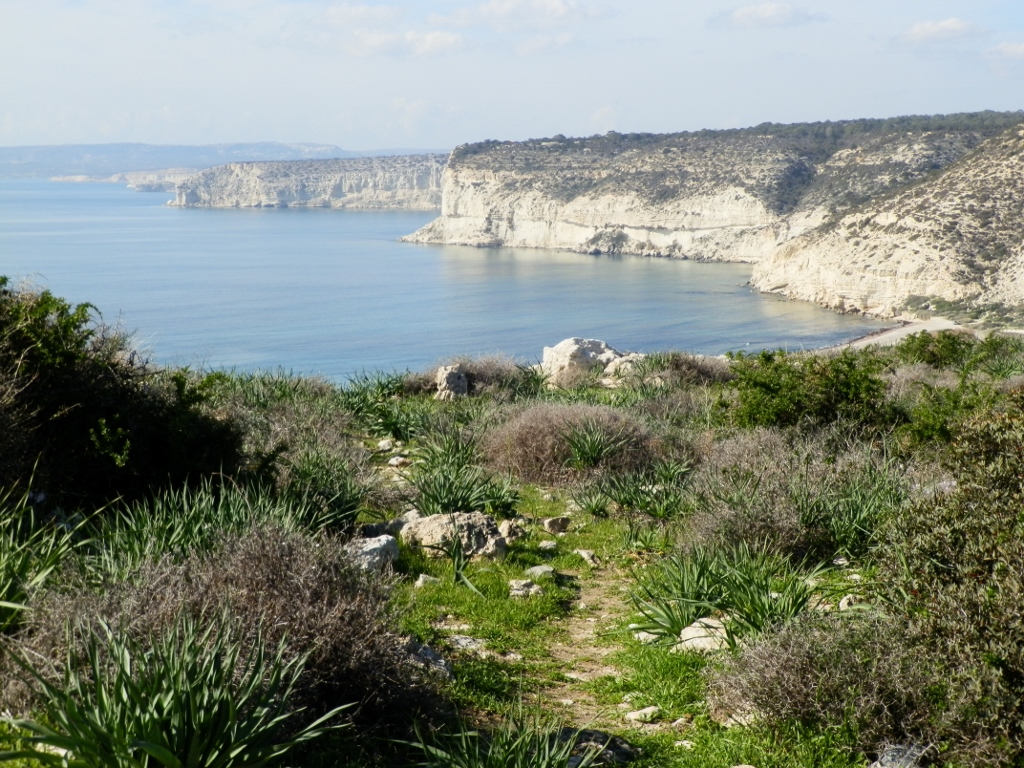 Kourion, stunning viewpoint close to the Earthquake House
Kourion, stunning viewpoint close to the Earthquake House
Further within the site, it is possible to see remains of an early Christian basilica and of the agora, with a Nympheum close by. It is a complex of temples dedicated to the nymphs that was built from the 1th century AD to 365, i.e., until the earthquake put the stop to the city.
I was particularly glad that I could recognize thermae even without any sign, i.e., the part of the thermae where there used to be floor heating during the Roman times. Why? Because I learned about it during my visit to the site of Viminacium near Kostolac in Serbia. Namely, in some rooms it is possible to see short pillars made of bricks, while around the perimeters of these rooms, where there has been no caving in, one can see slabs that used to be laid down over those pillars. The pillars are low and if they are whole they reach only up to the level of the floor. The adjacent room was used for building fire and heating air, which was then transferred through a tunnel leading to the space with pillars that was under the slabs on which people walked and ... ta-daaa!!! There is our floor heating. So, wherever one sees such short pillars made of bricks among ruins from the Roman period, one can recognize the space where the floor was heated and that was, by the rule, in Roman thermae, i.e., in their public baths.
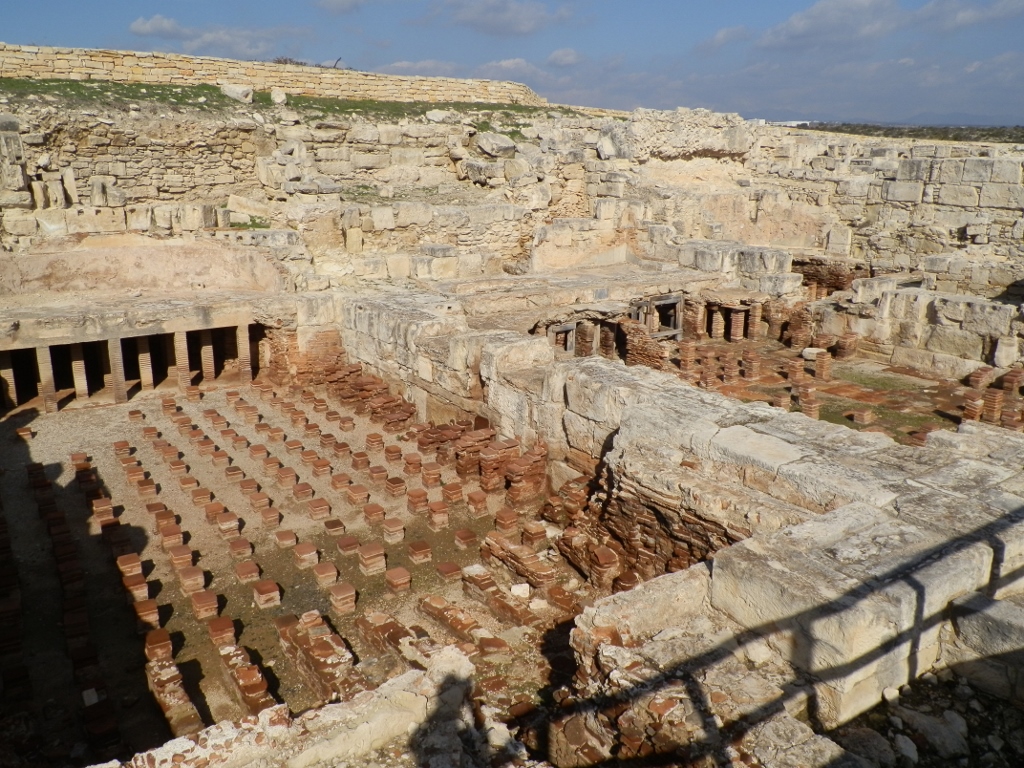 Kourion, the floor heating system
Kourion, the floor heating system
And finally, at the end of the site, one can visit the House of the Gladiators and the House of Achilles thus named on account of some wonderful mosaics with the given subjects that decorate the floors of these structures.
All in all, the visit to Kourion was most enjoyable and satisfactory, after which we continued further westbound driving on the road that leads parallel to the shore. That was very important for our intentions, as our next destination was a birthing centre. Not just any birthing centre, but rather a place where no less than a goddess was born. As a preparation for this story, one just needs to look at Botticelli’s painting “The Birth of Venus” held at Uffizi Gallery in Florence and everything I’m talking about will be clear. With a note that Botticelli was an Italian and under ancient Roman influence and hence – Venus. This, of course, concerns Aphrodite, the ancient Greek goddess of love and beauty, who was born out of sea foam precisely in Cyprus, here, near Pafos. As we approached the place called Petra tou Romiou or the Aphrodite’s birth place, as I find it easier, we came across a couple of viewpoints stopping there in order to enjoy the truly divine vista.
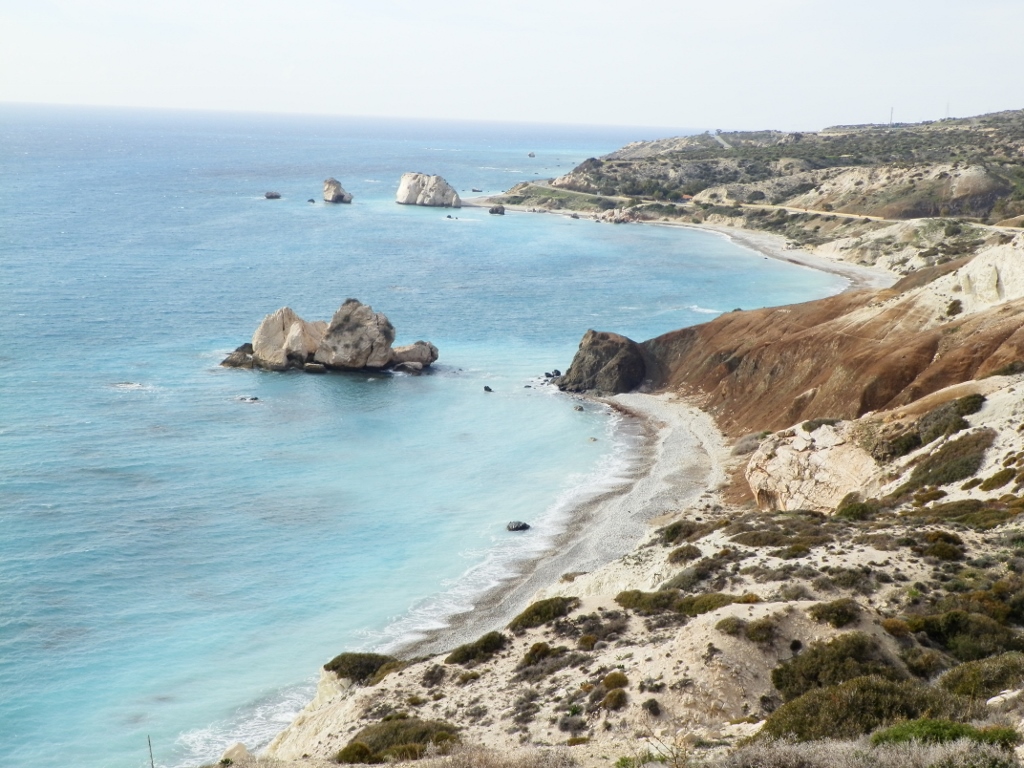 Aphrodite’s Rock (that’s the one close to the top of the picture that is “connected” to the beach)
Aphrodite’s Rock (that’s the one close to the top of the picture that is “connected” to the beach)
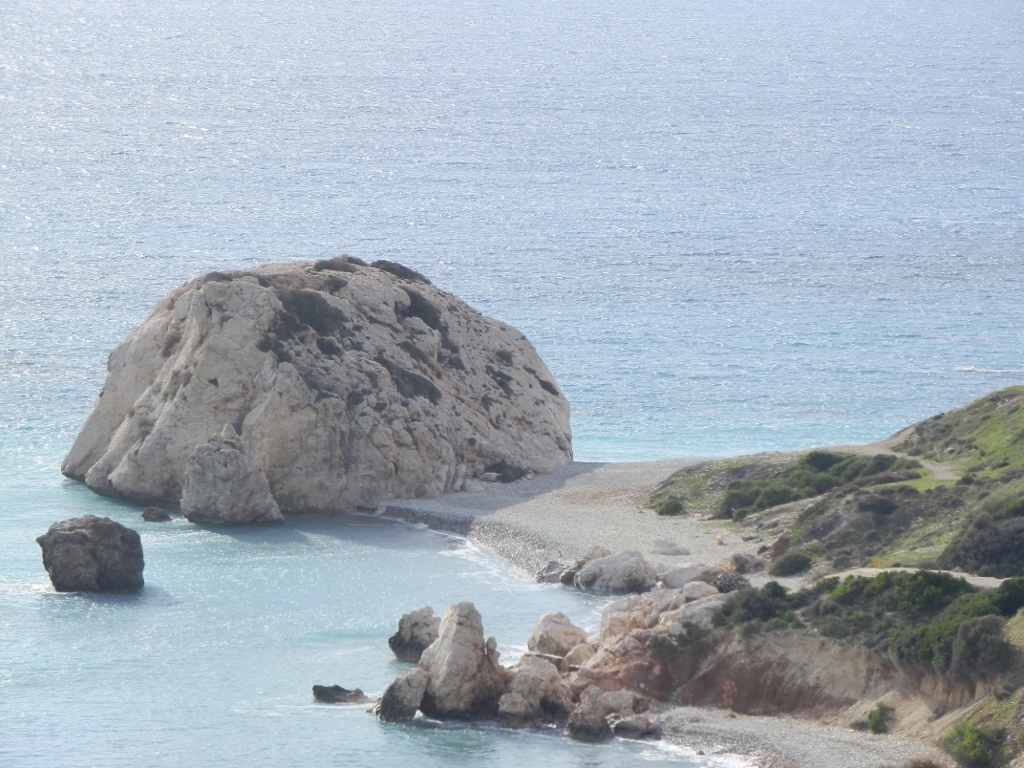 Aphrodite’s Rock
Aphrodite’s Rock
After a couple of short stops, we left the car on a parking lot and then passed through a narrow tunnel that leads under the road and thus we got to the beach. That large Aphrodite’s Rock simply rests against the beach and when one looks at it from the front, there is a beach segment to the right and a beach segment to the left. The left part is all made of white round pebbles, but in the right one, under the white pebbles, there is also dark fine sand and it is my free estimate that Aphrodite was born right there. Imagine the goddess, just born and with divinely gentle feet, having to make her first earthly steps on the left part of the beach with rocks alone. She would have been all bruised up!
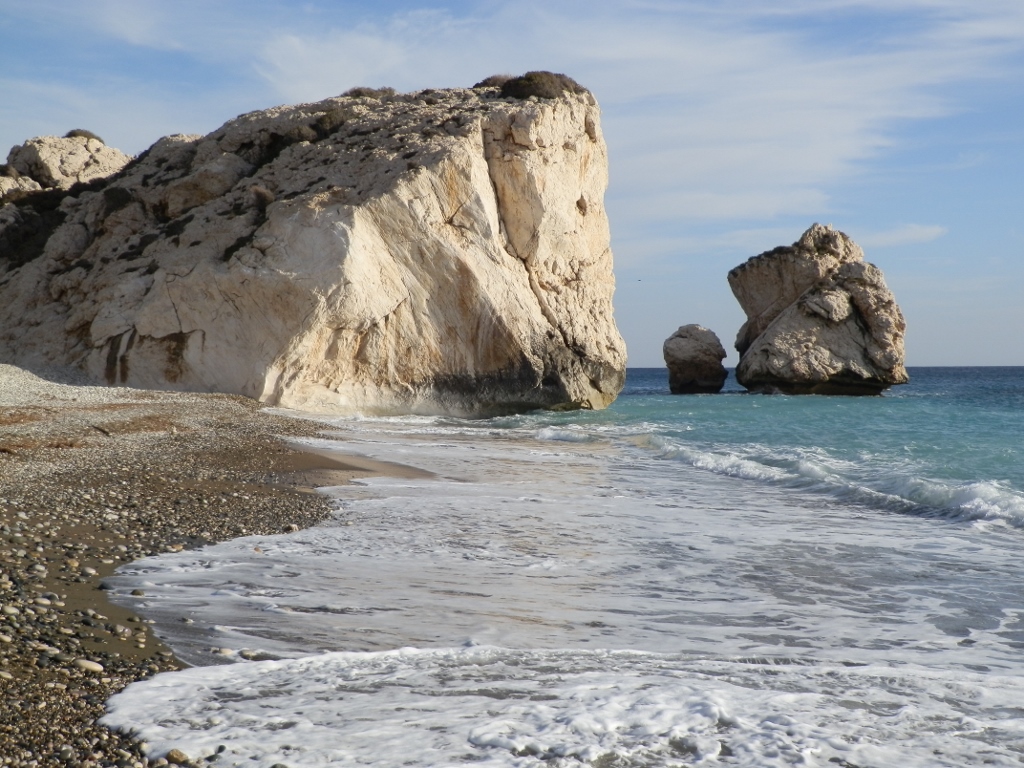 Aphrodite’s Rock – here is the beach, here is the sand, here is the sea foam
Aphrodite’s Rock – here is the beach, here is the sand, here is the sea foam
It probably must be a great joy to bathe at this beach, with such nice views, at the time when the sea is warm. Regardless of the sunny day, the two of us were not ready to step into the waters of the Mediterranean in January, although there were some visitors who didn’t mind either the temperature of the air or that of the water, which we found too low for our liking.
After this, the goal was to go and visit a site that is in the UNESCO’s World Heritage List. This is the archaeological park Kato Pafos and this cultural property extends over three locations. The first on our route was the one in Kouklia village. Within the scope of the excavations of Palaipafos which used to be one of the most famous pilgrimage centres of ancient Greece and ancient Rome, there are remains of the Aphrodite’s sanctuary and a museum. Originally, there used to be a large temple, walls of huge dimensions, monumental entrance and several buildings used for banquets of religious nature. During the Middle Ages, a sugar production plant was built over the remains of the sanctuary and that led to a large-scale destruction of the original structures. In addition, an administrative centre was built in the south part of the site which was used for the control of sugar production in the region. Nowadays there is a fine museum there.
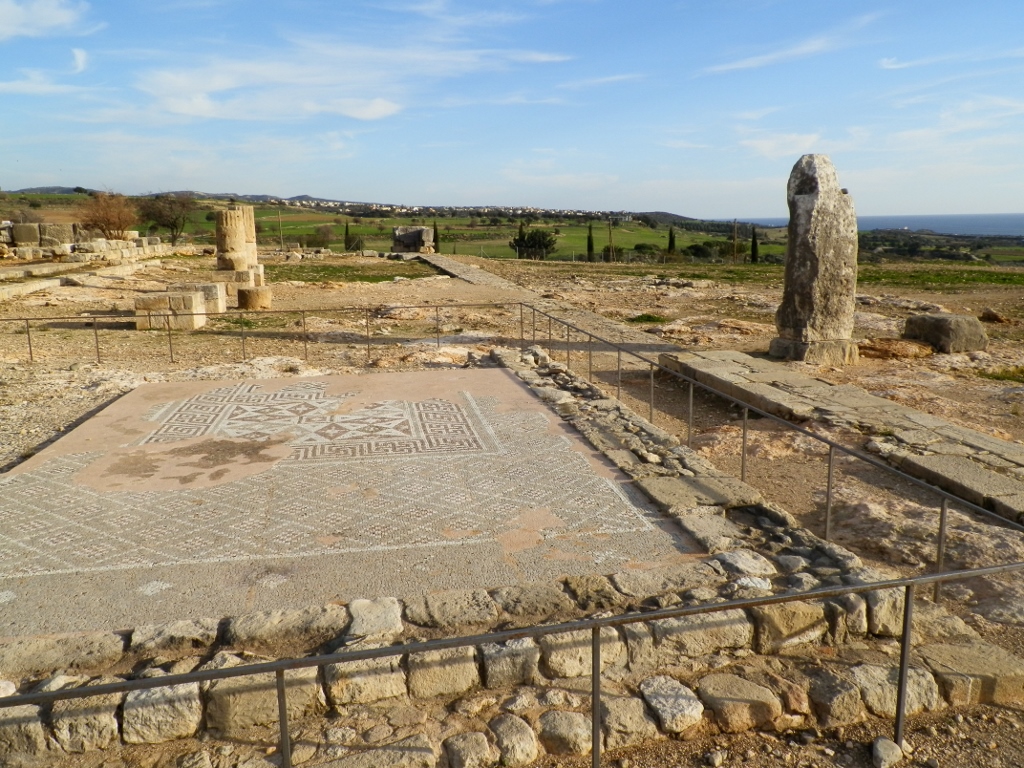 Remains of the Aphrodite’s sanctuary in Kouklia village
Remains of the Aphrodite’s sanctuary in Kouklia village
And then we finally headed for Kato Pafos. I had quite a confusion in my head as to what the proper name of this site was and where we should actually go, because I seemed to run into confused information and several different denominations used in parallel, but the signs along the way did help us a great deal and we got straight to the destination of our choice. The cultural property “Pafos” actually consists of three parts in two locations. The first one is the one in Kouklia, and the other two parts which are considered to be the same site, although they are a few kilometres apart, are Kato Pafos and the Tombs of the Kings. The day was already getting close to its end and as a result of that we didn’t manage to visit the Tombs of the Kings and even our visit to Kato Pafos was done in an extreme hurry. Still, this was a very good informative visit. When I don’t succeed in seeing or visiting something during my journeys, I usually comfort myself by saying: “One always needs to leave something for the next time.” This was also the case now. On the other hand, it is not only the question of comforting myself. Namely, the mosaics at this site are deemed to be among the most beautiful in the world. There are a lot of them that are protected from the elements under different structures (e.g., the House of Aeon and the House of Dionysus), while some others are out in the open and may be seen well, but it was also clear that there were many more mosaics in the open that were conserved during winter – the experts lay down a protective covering made of some nylon material, with a fine layer of sand or pebbles over it. In other words, even if we had had more time, we wouldn’t have seen it all, which practically constitutes an invitation for a new visit to Cyprus, but when the weather is finer. The site itself requires at least 3 to 4 hours of a slow tour around.
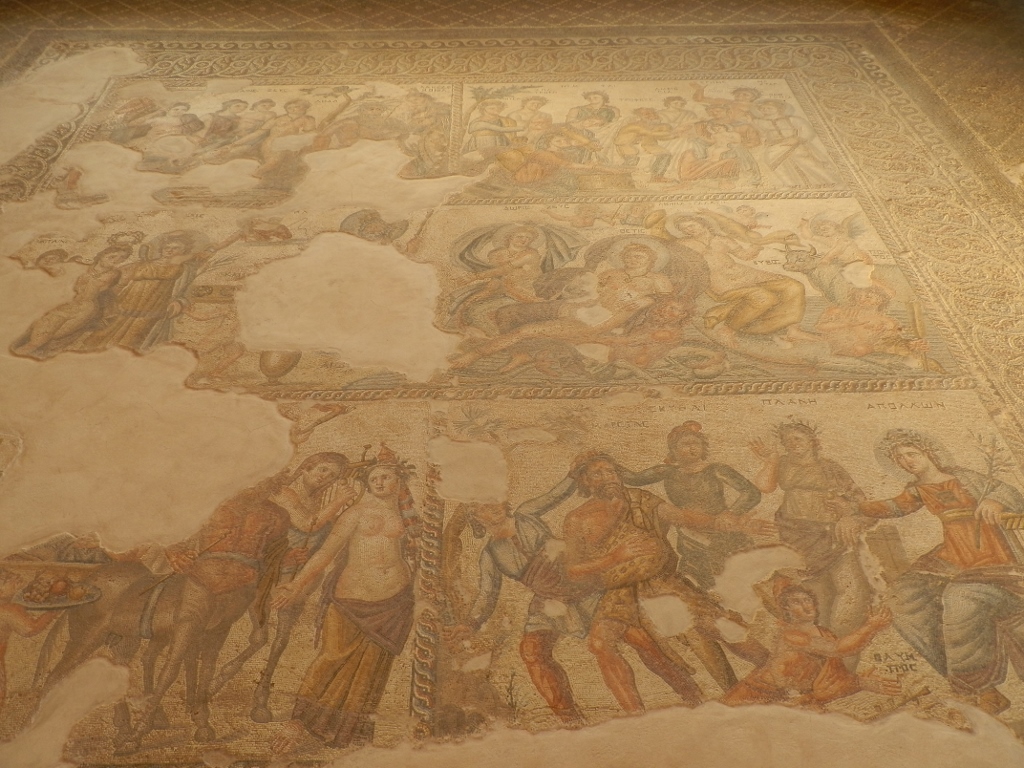 Kato Pafos, a mosaic at the House of Aeon
Kato Pafos, a mosaic at the House of Aeon
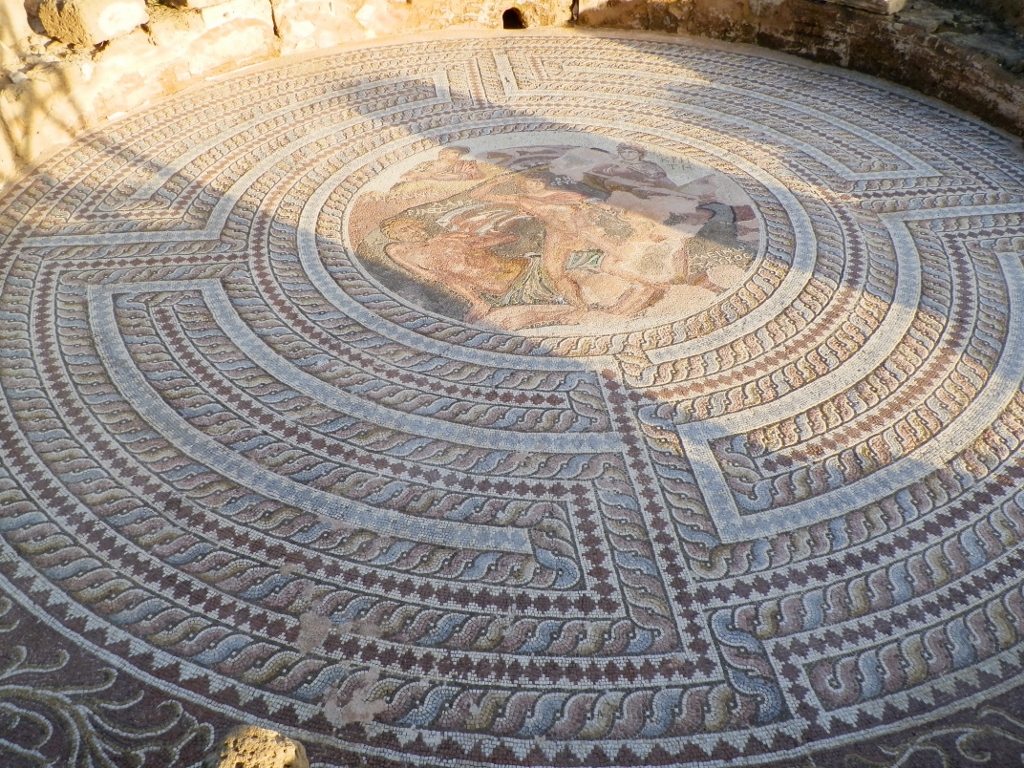 Kato Pafos, a mosaic at the House of Theseus
Kato Pafos, a mosaic at the House of Theseus
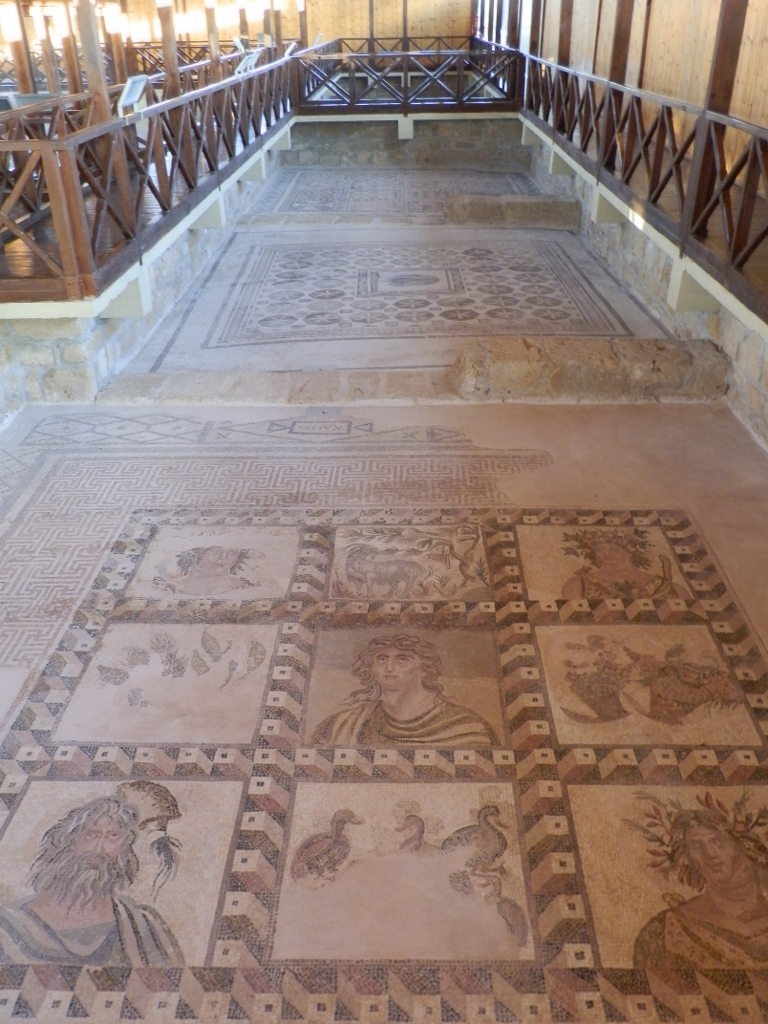 Kato Pafos, a mosaic at the House of Dionysus
Kato Pafos, a mosaic at the House of Dionysus
In addition to mosaics and remains of the houses the floors of which were decorated by the mosaics, within Kato Pafos there is also a small Odeon used nowadays for concerts and theatre performances, Roman Agora, a large theatre, remains of an early Christian basilica, as well as remains of a Frankish castle from the 13th century that was destroyed in some earthquake of the past.
And while we were somewhere between those structures the sun set for the day. Other than a few tourists, the site was completely deserted by then. As the two of us approached the exit, we realized that everything was closed and that there were no employees around, which left us somewhat confused. Still, there was a metal-bar gate which revolved, but only in one direction, so it was possible to get out of the site after all. A little bit of walking around the Pafos port and it was time for us to head back to Larnaca.
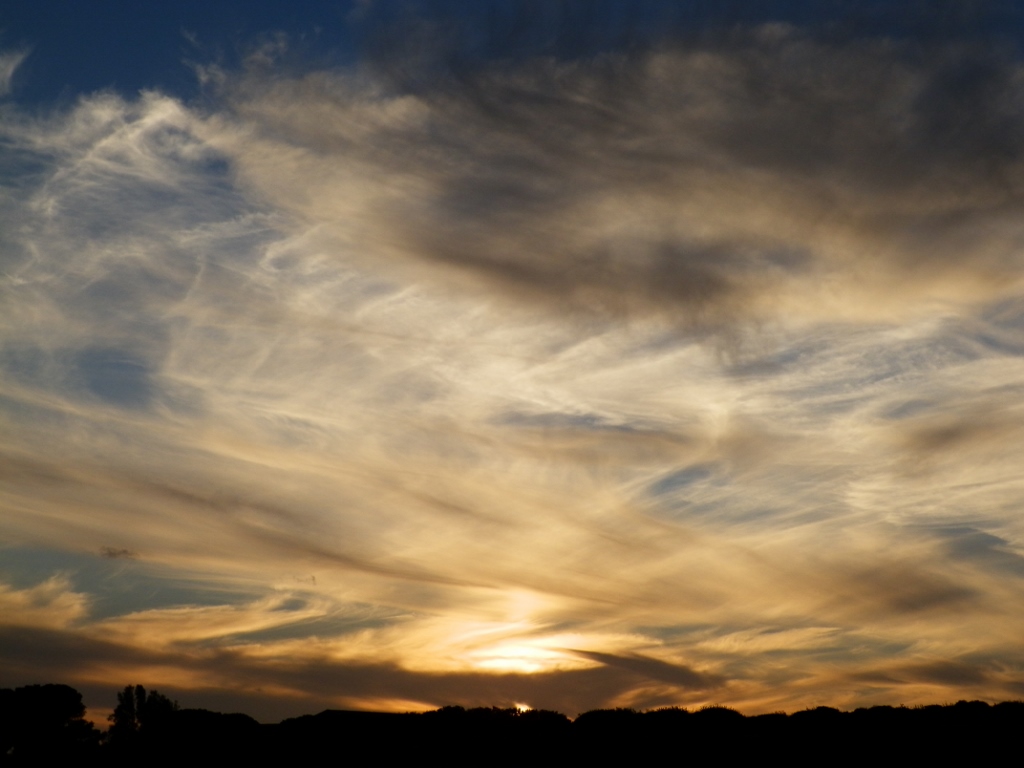 The sky above Kato Pafos
The sky above Kato Pafos
On the last day, we went to another church that is situated in Kiti village, 7 km west of Larnaca, and that is the Angeloktisti church, which means ‘built by angels.’ The church seen today dates back to the 11th century, but it was actually built on top of the remains of an early Christian basilica. It is exceptionally beautiful from the outside, but the atmosphere that prevailed in its interior was something very special.
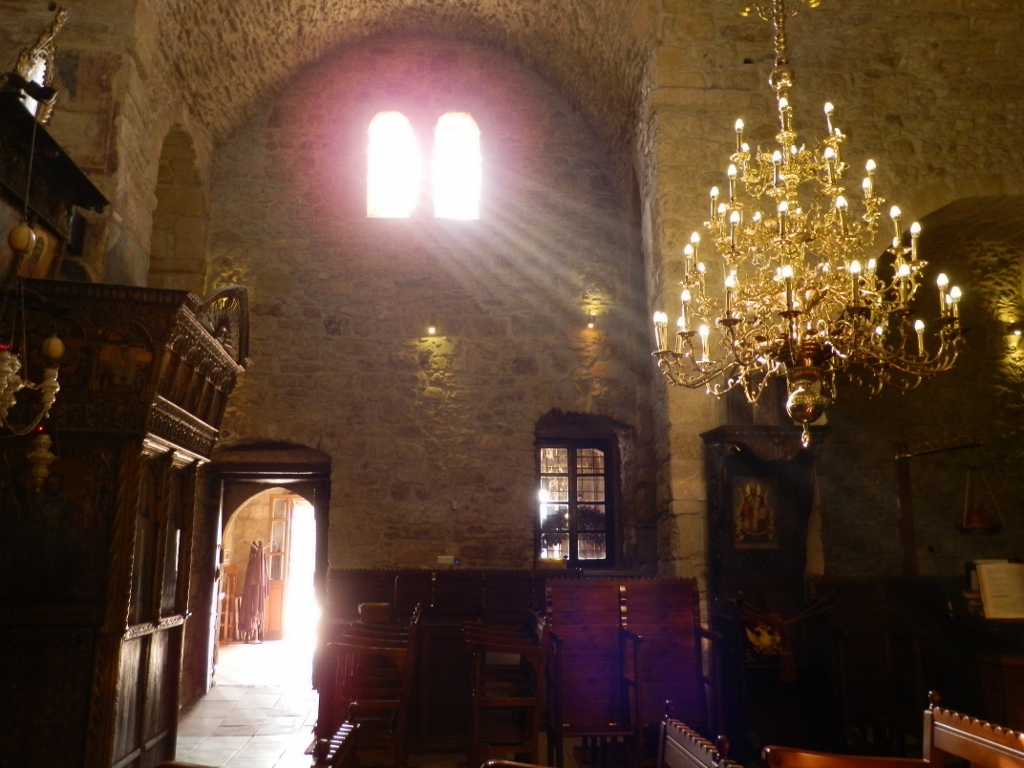 The Angeloktisti church in Kiti village
The Angeloktisti church in Kiti village
The afternoon was spent walking or taking coffee at the Mackenzie beach, but also sorting through the impressions of our stay in Cyprus.
Cyprus is known as the island of the sun. I would also add that it should be known as the island of churches and cats. Some of the churches I have already mentioned, but I haven’t spoken about cats so far. There is actually nothing to talk about them – there are simply a lot of cats that may be encountered wherever you go. But, let me be a little bit more serious. The essence is that it may appear at first sight that Cyprus offers “only” beaches and summer fun, but that would be erroneous. Visiting the island properly and still having enough time to have a good rest would require several weeks. Or, which is probably much better, that one keeps coming back here again and again.